Penguins are predatory birds, and their food preferences slightly differ among varied species. And the eating habits of penguins also depend on several factors such as season and location.
So, what do these “flightless birds” eat? Penguins are carnivorous but their diet is piscivorous. Their diet mainly consists of different types of fish such as sardines, cuttlefish, silverfish, etc. They also eat aquatic animals such as squid, jellyfish, and octopus.
In this article, I will discuss the food and diet of different species of penguin. I will also discuss some interesting facts about penguins’ eating habits such as their fasting period. Let’s explore.
What Food Do Penguins Eat?
As I said, penguins are sea birds, and they are carnivorous. As penguins primarily eat fish, they can be called piscivorous also. However, food preferences vary among distinct species.
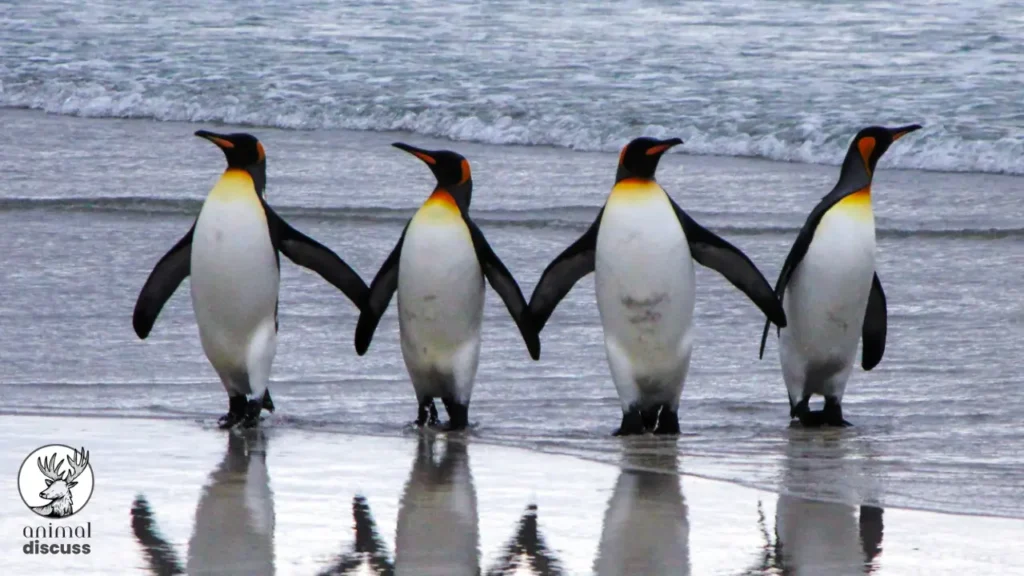
Here is a closer look at that in the table below.
| Name of Species | Diet |
|---|---|
| King or Emperor penguins | Fish, crustaceans, and cephalopods |
| Adélie penguins, gentoo penguins and Chinstrap penguins | Krill, silverfish, and squid |
| Little Blue Penguins | Several types of fish and Squid |
| Galápagos penguin, Magellanic and Humboldt Penguin | Sardines, cuttlefish and crustaceans |
| African Penguin | Anchovies, Small fish such as Sardines |
| Yellow-eyed Penguin | Small fish and Squid |
| Macaroni, Fiordland, Snares, and rockhopper penguin | Krill, octopus, and squid |
The two largest species of penguins are Emperor and king penguins, and they live in Antarctica. They eat fish such as silverfish and squid. Their food also includes crustaceans and cephalopods.
Conversely, Adelie and Chinstrap penguins are comparatively smaller species. They forage offshore as they are shallow diving species. So, they mainly eat a lot of krill.
On the other hand, Galapagos penguins hunt in tropical water because of their habitat. Their food includes cold water fish such as mullet, sardines, and anchovies.
Interested to know further about Penguin overview? Check this article in my blog.
What Food Penguins Cannot Eat?
As carnivorous animals, Penguins do not and cannot eat any plants or fruits. One reason is that their digestive system is not designed to digest the fiber of the plant. Withal, they do not eat fruits as they do not grow in cold regions.
Besides, penguins do not eat insects. As penguins are sea birds, they spend 75% of their time on water. It is unlikely that they will encounter insects. Moreover, penguins have slower movement on land so they may find it difficult to forage insects.
How Does a Penguin Get Its Food?
Penguins are predators so they hunt for their food. Different species of penguins have adopted different techniques for hunting to capture their food. Some penguins dive deep into the sea, some hunt solo and some species hunt in groups.
The emperor penguins hunt solo because they can dive deeper and longer than other penguins. They can dive deep up to 500m at a speed of 20mp/h. With their beak, they snatch their prey.
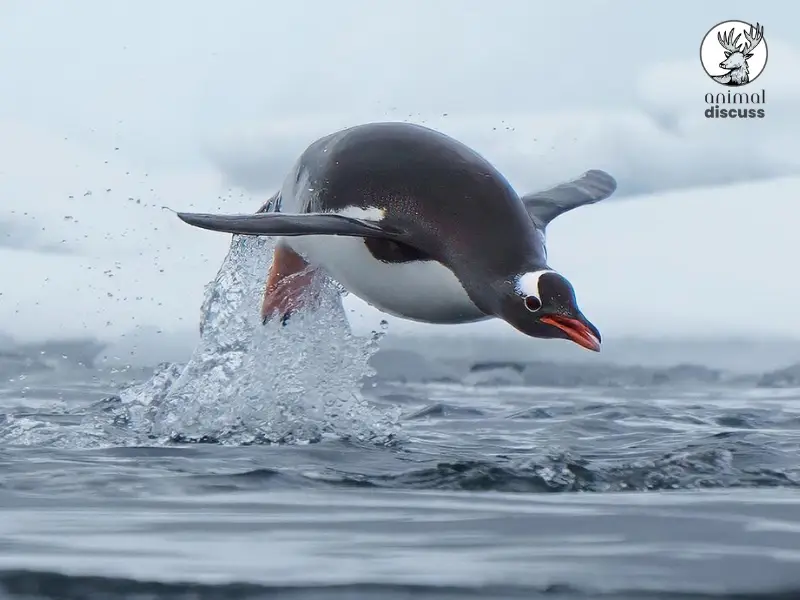
Unlike other species of penguins, the yellow-eyed species are shy and avoid contact with other penguins. So, they also tend to hunt alone.
Conversely, some species such as African and Little penguins use the group hunting strategy. A group of penguins’ herd fish in circles on the surface water by their synchronized movements.
On the other hand, the smaller species such as Adelie and Chinstrap penguins forage in shallow water. They shallow dive in rocky reefs and kelp beds. The advantage is that these places have an abundance of prey. Withal, the penguins require less energy than swimming to deeper depths.
What’s more, penguin’s physical characteristics help them to catch their prey. They have streamlined bodies and strong wings that help them to dive deep into the sea. Penguins can stay underwater for up to 20 mins.
Besides, the banded penguins have black stripes on the side. This black strip helps them to disrupt the swarm formation of small fish underwater. As a result, the penguins can easily catch fish easily.
How Much Do Penguins Eat?
The amount of food penguins eat depends on their body size and time of the year. Small penguins such as Adelie eat up to 800 gm of krill in a day. Conversely, larger penguins such as the Emperor penguins eat 2 to 3 kg of fish.
You would be surprised to know that penguins do not eat food for several days. Before the start of their fasting period, penguins increase their food intake to store body fat. Moreover, penguins eat more during winter than summer because they are more active in the summer season.
Penguins’ Diet at Various Life Stages
The eating habits of penguins vary at various stages of their life. Let’s discover the diet of penguins at various life stages.
To start with, the Chicks of Penguins eat “crop milk” which is created in a pouch in the throats of the parent penguins. This crop milk is rich in protein and fat. The chicks depend on their parent for food as they cannot hunt on their own. Moreover, the parent also feeds their chick partially digested fish and krill.
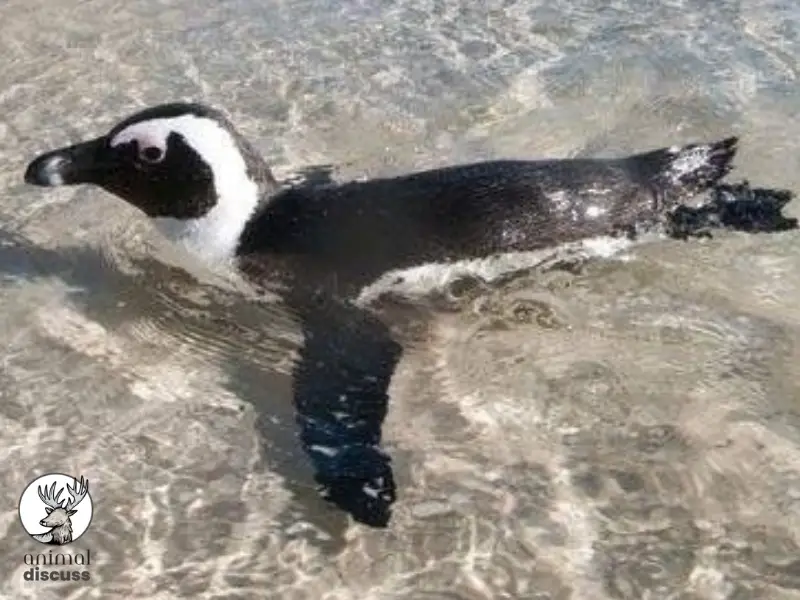
After several months when the chicks molt, the parent penguins stop feeding them. After the chicks grow new feathers, they go hunting for food and their regular diet begins.
During the breeding season, the diet of penguins again changes. At this time, the female penguins actively get involved in hunting and male penguins remain onshore to hatch their chick.
The female penguins hunt food and then return with the food to feed their mate. This behavior is seen especially in the Emperor penguins.
How Long Can Penguins Go Without Food?
Penguins go without food for several days. They fast for an extended period during breeding, and molting periods. And during incubation, both parent penguins keep fast by turn.
Likewise, during the molting period, the penguins shed their feathers. Therefore, they lose insulation and waterproofing features. For this reason, they do not enter into the cold water to feed. However, the duration of the molt fast varies based on species.
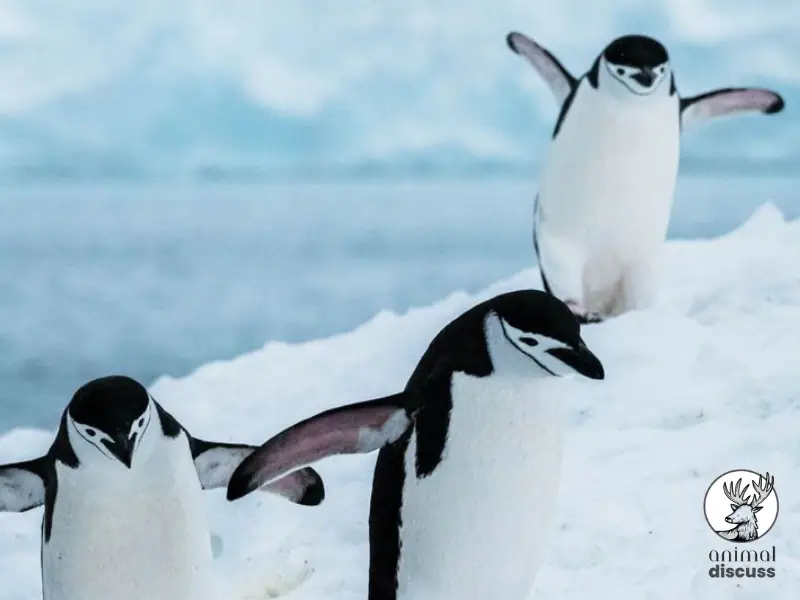
The fasting period ranges from two to five weeks based on the molting periods of each species. For example, the emperor penguins molt for about 34 days and the Galapagos penguins molt for about 13 days. So as long as the penguins molt, they go without food.
Furthermore, during the incubation of their chicks, parent penguins fast for several weeks. For instance, during incubation, the male king penguins fast for up to 54 days. Again, the male emperor penguin fasts for 90 to 120 days.
Factors that Affect Penguins’ Eating Habits
Some factors such as climate change, overfishing and pollution affect the eating habits of penguins.
Overfishing causes a decrease in penguins’ food sources. And they have to switch and change their diet. For instance, in the 1950s, Sardines were the primary food of Namibian Jackass penguins. However, when the sardines’ supplies decreased due to overfishing, they switched to bearded gobies.
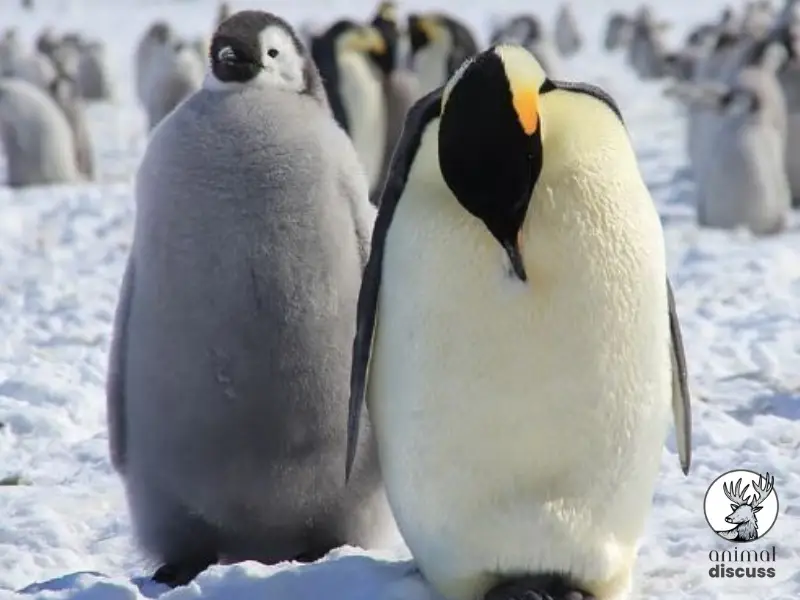
Climate change also affects the eating habits of penguins. Rising temperatures melt the sea ice which reduces the availability of krill. Krill are the primary food of many Antarctic penguins. Species such as Adelie and chinstrap have reduced their consumption of krill.
Foods Penguins Eat in Captivity
A penguin’s diet in captivity should ideally resemble that of the animal in the wild. This helps prevent health problems such as poor development and obesity that are frequently encountered by animals kept in confinement.
However, dead fish are the main food for penguins kept in captivity. It is typically frozen and thawed before feeding. They consume crustacean and krill species. It’s not too difficult to mimic their diet in captivity.
FAQs
Here are some frequently asked questions about the food and diet of penguins.
Conclusion
Penguins as carnivorous birds primarily eat fish and small aquatic animals such as squid and octopus. Their diet depends on their size and geographical location. The food preferences also vary based on the species.
They do not eat plants or fruits as they cannot digest fiber. Besides, they do not eat insects as they are sea birds. There are several interesting eating habits of penguins such as they fast during the breeding season and they swallow stones. And the diet of penguins in captivity should resemble their diet in the wild.

